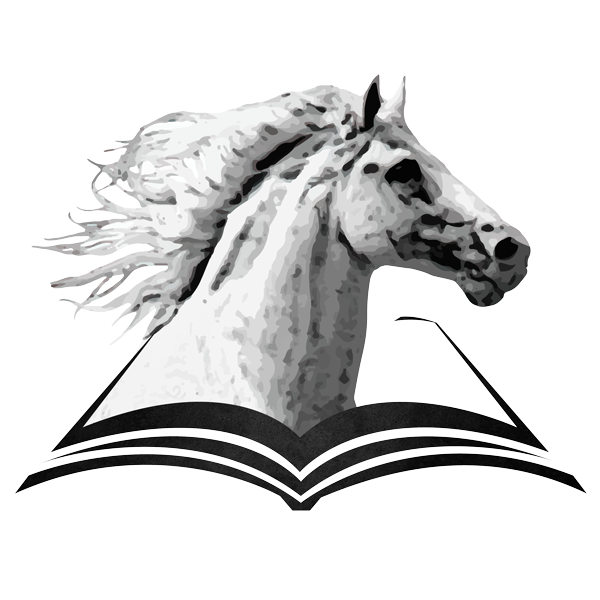In order to meet a horse’s nutritional needs, all the nutrients must be included in the diet according to the horse’s age, reproductive stage, physical activity, etc. Each kind of food may take a different length of time to be eaten, digested, and its waste material eliminated. The transit time in the gastrointestinal tract mainly depends on the content of fiber, water, and fat.
- Soluble Carbohydrates: These are the non-structural carbohydrates of plants (sugars and starch) that are used by the horse as a source of energy. Sugars and starch are broken into smaller particles (monosaccharides), such as glucose, due to the action of carbohydrases (specialized enzymes) secreted into the small intestine. Thereafter, monosaccharides are absorbed into the same intestine and, once in the bloodstream, they are regulated by the endocrine system. However, small amounts of carbohydrates pass through the small intestine without being digested and reach the cecum to be fermented by the microorganisms present in it.
Soluble carbohydrates are found in plants (especially the young ones), grains, molasses, carrots (and similar roots), sugar (e.g., extracted from cane and beets), and mare’s milk in the form of lactose (which is only absorbable by nursing foals and by young horses under 30 months of age).
- Fiber: This word refers to the structural carbohydrates of plants: cellulose and hemicellulose. Fiber increases with the plant’s age in order to support leaves, flowers, seeds, etc. Moreover, as the plant ages, the usable fiber (cellulose and hemicellulose) gradually turns into lignin (a hard, non-carbohydrate component), which is not possible for horses to digest. High levels of fiber in the food not only hinder digestibility of some nutrients, and may lead to colic, but also may take up to 60 hours in transit through the gastrointestinal tract.
Fiber is very important in the horse’s diet for several reasons. Although it is not digested in the small intestine, a proper amount of fiber aids in the passage of foodstuff through the gastrointestinal tract. Once fiber reaches the cecum, the specialized microorganisms in it start a process of fermentation. The final product (volatile fatty acids) is absorbed in the cecum and used by the horse as a source of energy. A horse’s diet should contain fiber from 22% to 30% (26% in average) for adult horses.
- Fat (Lipids): Fat provides 2.25 times the energy (calculated in Megacalories) as carbohydrates, which makes fat a good way to increase the energy in a horse’s diet. Therefore, in some circumstances, grain intake may be partially reduced by replacing the amount of grain with the proper amount of fat, based on the calories provided by both sources. Fat is emulsified (fractioned) by the bile salts into fatty acids in the small intestine, where they are absorbed directly by the intestinal walls. Bile salts are continuously secreted by the liver into the small intestine because the horse does not have a gallbladder to accumulate them as it occurs in humans.
In general, fat from animal sources has less palatability and digestibility for horses than vegetable fat. Therefore, grass, grains, and added oils (such as flaxseed oil, olive oil, and other vegetable oils ) are the most common sources for feeding fat to a horse. Nevertheless, fish oil may also be used as a fat source, which also provides the benefit of omega-3 fatty acid.
- Protein: The quality of protein in any kind of food depends on the type and amount of amino acids in it. Protein is fractioned (hydrolyzed) into amino acids, primarily in the small intestine, by the action of proteases (specialized enzymes); the amino acids are then absorbed by the intestinal walls. The antibodies from the broodmare’s colostrum (the first milk produced by the mare after foaling) are the only kind of protein that are absorbed intact by the foal’s small intestine, and only during the first 24 to 36 hours of life (read more about this here
The main function of amino acids in a horse is to build the tissues (organs, muscles, tendons, skin, hair, hooves, cartilage, and even the blood cells), by constructing new chains of amino acids (proteins), according to a given genetic code.
Therefore, for proper growth and development, young, growing horses need a greater amount and higher quality of protein than horses in other physiological stages. Lysine is the most important amino acid in growing foals. Pregnant mares and lactating mares also need a great amount of good quality protein in their diets.
- Water: Although it is not a real nutrient, water is essential to the horse’s diet because it is the means by which all solutes of the body are diluted for chemical reactions. Thus, approximately 68% – 72% of the horse’s weight is water.
Because the horse needs to replace the internal water that is lost in urine, manure, sweat, and through breathing, water should always be available. During normal conditions, an adult horse of about 1,000 pounds (which, in general, can be considered as a “Horse Standard Unit”) will drink from six to ten gallons of water every day, depending on the weather, exercise, moisture contained in the food, and reproductive stage. Pregnant and lactating mares, and working horses need a greater amount of water than other horses. The horse must drink good quality water, free of chemical and biological contaminating agents; therefore, the water source (even a spring) needs to be evaluated before being used for their consumption. Based on this evaluation, special filters may be installed on the pump.
Water may be flavored by adding a small amount of sugar, salt or electrolytes, starting, at a minimum, two to three weeks before the horse travels to another location. When the horse arrives at the new location, the same flavoring may be added to the water to prevent the horse from objecting to the water’s taste. This recommendation is important because, if a horse does not drink enough water (due to its different flavor), it may become dehydrated and stop eating.
- Minerals and Vitamins: These nutrients are essential for metabolism because they facilitate most of the biochemical reactions; therefore, deficiency or excess may create severe problems for a horse. Horses need some minerals (calcium, phosphorus, magnesium, potassium, and sodium chloride) in greater amounts than others. These are known as “macro minerals.” The other minerals (copper, iodine, iron, manganese, selenium, sulfur, and zinc), known as “trace minerals” or “micro minerals,” are also required by the horse, but in lesser amounts. Macro minerals should be provided in the horse’s diet, but not trace minerals (because the amount the horse needs is too little, and they usually are present in most food).
Vitamins are classified according to their solubility, either in fat or water. The fat-soluble vitamins are A, D, E, and K. The water-soluble vitamins are: B1 (thiamin), B2 (riboflavin), B12 , and biotin.
Healthy adult horses obtain most vitamins from forage or synthesize them from precursors (a substance that allows another to be formed) contained in the forage through the action of bacteria in their intestines. However, young, growing horses, pregnant and/or lactating mares, horses in training, and horses of any age kept in stressful situations need the addition of vitamins to the diet.
Note: Learn more about Minerals and Vitamins for horses here.
From the entire feed intake, only a portion of its nutrients is digested and absorbed into the horse’s gastrointestinal tract and the rest is eliminated. The usable fraction of a nutrient, compared with the total amount of that nutrient contained in the food, is called “digestibility.” Of course, feed with a high level of digestible nutrients is more valuable. For example, legume hay is more digestible than grass hay.
On the other hand, teeth in bad condition lead to low digestibility of nutrients, especially when sharp points or unleveled areas (such as ramps) in the premolars and molars are present, because the horse cannot chew properly. Gastric ulcers and/or high internal parasitism levels also lead to a lower rate of digestion. In addition, hard work diminishes digestibility, probably because of increased peristaltic movements (contractions) of the intestine that make the foodstuff pass faster.
Note: Read here about Horse feeding sources.

